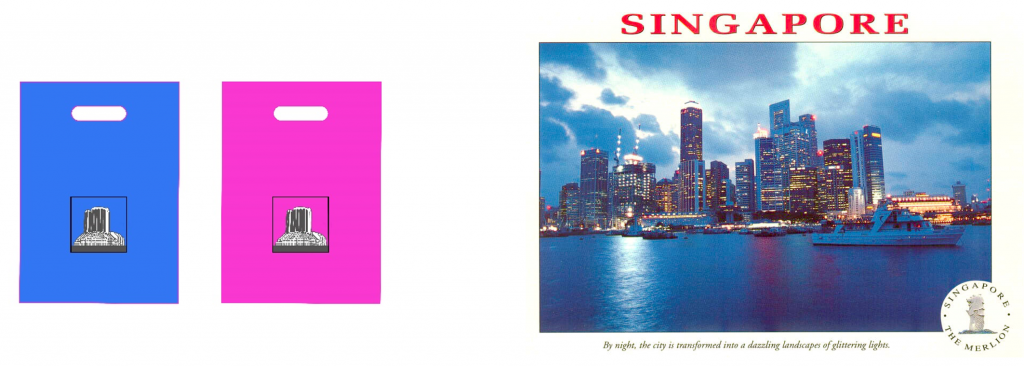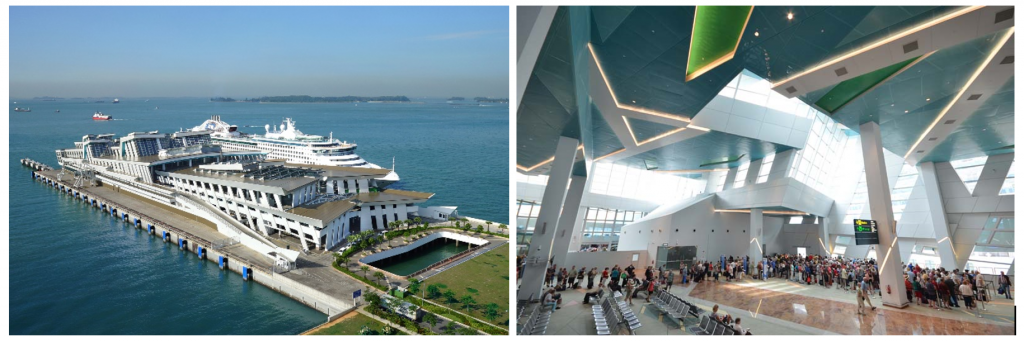My Dream – Becoming an Architect
I was born in Sarawak, Malaysia, where most of the buildings are low-rise. One day, when I saw the image of a 22-storey building printed in black on a souvenir bag, I instinctively took a pencil and paper to trace its building form. That building was the Wisma Saberkas building – the tallest building in Kuching at that time. I was only 9!

A few years later, my brother showed me a collection of postcards featuring Singapore view. What I saw was an orchestrated skyline of cutting-edge buildings. I was inspired by this multitude of rhythmically laid out towers of varying heights, geometry and texture; it made a visual statement of the Singapore CBD, which incited my imagination. I was immensely fascinated as I saw life, freedom and hope embodied in this panorama.
These two moments changed my perception of the world, and I decided that I wanted to be an Architect. I started pursuing architectural studies in Singapore and went on to complete my degree at the University of New South Wales in Australia.
I have been practising as an architect for about 20 years. I am still fascinated whenever I see a vista of buildings. Such sights will never cease to fill me with curiosity that ignites my passion for architecture, and through constant reflection, inspire me to think out of the box to creatively take on every design endeavour.
Architectural Values – What they mean to me
I see architecture as a composition of unique structural form and spiritual space to bring life to people. The use of geometrical planes can be enhanced by colours and textures. Space comes alive with the ever-changing dance of sunlight and shadow over time – this is the beauty of architecture.
I visualise buildings as unique built forms set against their urban context rather than isolated structures. We experience varied scales of architectural styles and functions which are in constant dialogue and interaction, against the backdrop of the collective memory of society to create dynamic urban experience. Each building makes its own statement of its existence and offers new experiential possibilities and existential meaning to people in the environment.
Hence, as architecture is not just about the subjective intentions of an architect, it is essential to study and understand people’s needs and how they use, experience, and envision buildings. This will better serve both the needs of individuals and the larger community.
The epitome of an architect is someone who has found the essence of the design of their building, being able to articulate and integrate functional relationships between space and its physical environment, will stand the test of time, as it is not just a fancy fad. In this respect, several architects come to mind, namely legends such as Frank Lloyd Wright with his Falling Water and I. M. Pei with his Louvre and Bank of China in Hong Kong.

My Project Experience – Valuable Lessons
The experience I gained from completing numerous projects taught me important lessons about transforming ideas into architecture. First, an architect must conduct in-depth research, then with the knowledge, one can achieve a deeper understanding to design for users and the environment. Second, the architect must generate a clear mission to formulate a comprehensive design strategy. Finally, the architect must be afforded the freedom of thought to creatively problem-solve.
Architecture combines engineering know-how, effective communication, well-articulated ideas and very importantly team engagement to engender a greater sense of ownership. This guides all stakeholders down a common path towards resolving problems and directly address the heart of the matter.
The biggest challenge I face in projects have always been around the identification of the root of issues and the elimination of complexity. Two of such complex projects were the Marina Bay Cruise Centre Singapore (MBCCS) and the Masterplan for Woodlands Checkpoint. Only by continuously refining and reducing the issues can we discover the most viable, cost-effective and straightforward solutions.

Behind My Success – My Mentor
The most significant influence on my practice has come from my mentor, Dr Liu Thai Ker, whose architecture always embodies his design philosophy and principles. He has often reiterated that the key to mastering design is about understanding what impacts lives. Dr Liu discovered his own “unique recipe’ – design and planning methods through the unique experience of being a pioneer architect and urban planner in Singapore. I have been lucky to have had the opportunity to share that experience vicariously through him.
Furthermore, Dr Liu continually encourages his team to engage in exhaustive research, which results in the continued development of a solid foundation of design and planning theory. Only then can one confidently practise those theories, innovate along the way, and obtain objective critique and feedback. This practise will deepen knowledge, hone skills and build the architects’ ability to work with certainty.


